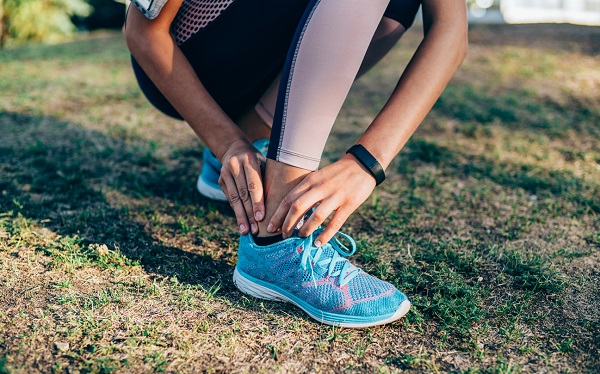-
The World Health Organization suggests that children aged between 5 and 17 should accumulate 60 minutes of vigorous physical activity daily. Over 80% of 11-to-17- year-olds in Australia are not meeting this recommendation.
At the other end of the spectrum though are young, pre-professional athletes, who need to find a balance to make sure they are not pushing their bodies too hard.
As a dance physiotherapist working predominantly with young elite dancers, the bulk of my clientele are in this group. This means one of the clinical problems we face is making sure growing bodies are not being overloaded and pushed beyond their physical capabilities.
What is load?
Load refers to the overall physical force being placed on the body. Managing load appropriately is vital in athlete conditioning, as it minimises the risk of injury and guides rehabilitation. When the amount of load outweighs the body’s ability to adapt, an overload injury can occur.
The difference for younger athletes is that throughout growth spurts and physical development, the body is undergoing constant change in size, shape, weight and hormones. Finding the balance between activity and recovery can be difficult, and requires effective communication between the medical practitioner, coach, parents and the athlete.
"Finding the balance between activity and recovery requires communication between the medical practitioner, coach, parents and the athlete."
How can we monitor load?
Professional sporting teams have their teams connected to a central database. Players upload specific data online, which is analysed to calculate optimal loads for individual athletes. For junior or recreational athletes, load monitoring can be done on a daily basis in their diary, on a calendar on their wall, or on smartphone apps.
The following parameters can be easily observed:
1. External load
External load is the volume of training (number of hours). This can be separated into acute versus chronic load. For example, a typical client of mine is a 13-year-old aspiring ballerina. Her weekly timetable involves 14 hours of dance, three hours of netball and three hours of school swimming – that’s 20 hours per week on a regular basis (chronic load).
During the school holidays, she participates in an extension ballet program, involving an additional four hours per day (acute load). This dancer’s body has not prepared for this sudden spike in volume, and is now more susceptible to injury.
2. Internal load
This can be measured as RPE (the rate of perceived exertion) and rated on a scale from 6 to 20 (6 being minimal, and 20 being maximum exertion.) Both the athlete and the coach can report RPE, with discrepancies noted. For example, a coach may report that one of his footballers had a light training session at RPE 10, yet the player rates his RPE at 18. When the RPE is consistently, unusually high, modifications to training type and volume may be necessary.
"Overall, the joy of participation and the benefits of maintaining an active lifestyle should be the primary focus."
3. Sleep
Establishing an adequate sleep routine is crucial. During sleep, the brain triggers a release in hormones that instigates tissue growth and repair. A growing body needs more time to rest and recover than an adult. The National Sleep Foundation recommends a teenager aim for between 8 and 11 hours of sleep per night.
4. General wellness
Health practitioners, parents and coaches must treat the athlete as a person and not a machine. Simple questions like, “How are you feeling today?” can provide powerful insight. If there is a persistent pattern of disproportionate chronic versus acute load, high RPE, poor sleep hygiene, or the athlete feeling generally unwell, changes to the training schedule must be made.
Overall, the joy of participation and the benefits of maintaining an active lifestyle should be the primary focus. Our collective goal is, after all, to keep kids in the game.
How to help young athletes manage training load

-
Stretches for gym enthusiasts
8 stretches to help you cool down from workouts
-
Stretches for office workers
Stretch out your back and relieve stress
-
Stretches for runners
Stretch your legs, hips and back after a long run
-
How to walk 10,000 steps
Discover how to easily reach your goal of 10,000 steps daily.
-
Everything you need to know about parkrun
Been wondering what a parkrun looks like? Where do you go? What do you do? How do you sign up? Find out here.
-
Five ways to exercise when on a budget
You don’t need to spend money on gym memberships just to meet your fitness goals. Here are five free ways to stay healthy and active when you’re living on a budget.
Subscribe to receive the best from Live Better every week. Healthy recipes, exercise tips and activities, offers and promotions – everything to help you eat, move and feel better.
By clicking sign up I understand and agree to Medibank's privacy policy





